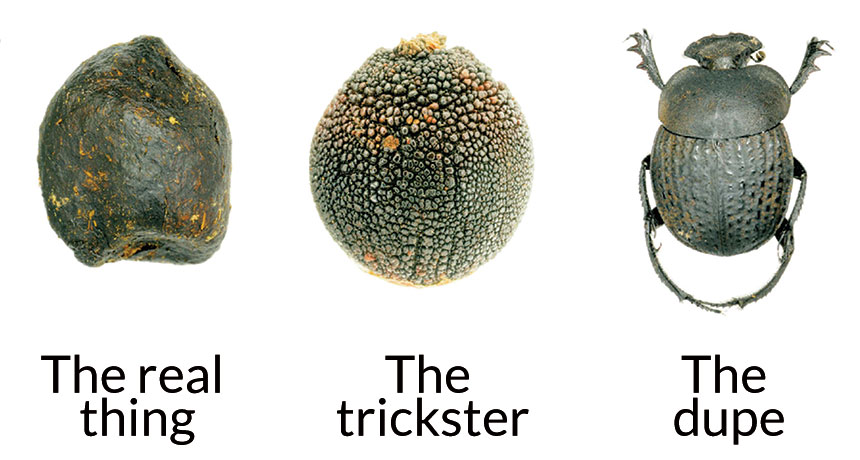Plant-animal interactions have not always evolved to become mutualistic win-win strategies like
birds dispersing seeds of palms while feeding on the fruits. Plants can be rather deceptive. They can hijact sensory vulnerabilities of animals. Secondary metabolites such as nicotine, caffeine, codeine can be rather addictive. Plant chemicals can also be used as deterrent. A sub-Saharan desert plant taily weed (Ochradenus baccatus) detonates a mustard bomb in the mouths of seed predators who dare to chew and destroy its seeds. Plant deception can take many forms. Orchids can mimic female bees to deceive male orchid bees to visit their flowers. Here we see another example of deception that is apparently very successful.
Seeds of Ceratocaryum argenteum (Restionaceae) emit a mixture of volatile chemicals present in herbivore dung. For obvious reasons, dung beetles become attracted to these seeds strikingly resembling to the droppings of antelopes. They roll and bury them just like they normally do with dung. The seeds provide no reward to the dung beetles. This means that the plant doesn’t need to invest in costly measures to attract and bribe dispersers. This is a remarkable example of deception for seed dispersal.
Ceratocaryum argentum (Restionacae) is an endemic member of fire-adapted fynbos vegetation of South Africa’s Cape region. The observations were made in De Hoop Nature Reserve. Seeds of this species are in the form of nuts and are the largest in the family. The brown seed coat based on its surface sculpting pattern is described as tuberculate with a notorious smell.
Most plant species with large nuts are generally buried by scatter hoarding mammals. At the study site the most frequently observed scatter hoarder mammal is the striped field mouse (Rhabdomys pumilio Sparrman). It consumes seeds but does not bury them. Despite being a seed predator, striped field mouse never consumed or buried intact seeds. However when the seeds were dehusked the mouse happily ate them. Fooling the dung beetle to bury the seeds away from their source provides a significant survival advantage.



1 Comment